Elisabeth Bell
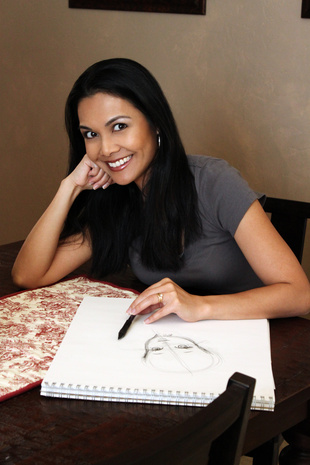
How did you get into illustration?
When it comes to being a creative, technically I am an animator. I received a bachelor’s degree in traditional animation through the Queensland College of Art, Griffith University, in Australia, back when Pixar was in its infancy. Becoming the illustrator I am today was a result of life happening.
After serving a full-time mission in Salt Lake City, Temple Square (and receiving this call all the way from Australia was a very big thing for me), I married the man of my dreams in the Mesa, Arizona Temple. My youthful aspirations to animate with Disney Animation Studios flew away, as I chose to become a full-time mother and nurture my growing little brood.
Now, almost twelve years later, with three beautiful young children in tow (ages ten, four, and three), I have followed what seems a natural course when it comes to my illustrations and have furthered my creative skills to a point that has allowed me to work from my home office and studio on my MacBook Pro and Wacom Intuos4 tablet (soon to be upgraded to the Wacom Cintiq 21UX).
Being able to work from home, around my family, doing what I love to do, is really a dream career for me. First and foremost, I am a mother. And I feel very blessed that my Heavenly Father has given me the talent that I have to help provide an income on the side for my family, and to bless the lives of others, while I work from home, around my children, who are actually large inspirations behind many of my pieces. I plan on venturing further with my work and how I apply the digital medium to my illustrations. It’s very exciting!
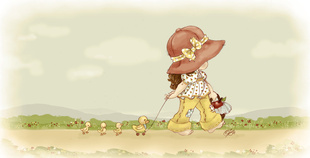
When did you decide to pursue illustration as a professional career?
Drawing is something I have always done since I was a kidlet. I pulled inspiration from Disney illustrations, Little Golden Books and countless other picture books. My most favorite place at school was the library. For endless hours I drew images that defined my fanciful world as child—and lots of princesses in big, floating dresses!
Since this time—and years have passed—I’ve enjoyed countless creative projects and opportunities, doing bits of animation here and there, doing wall murals, and providing art lessons to children ages 5–12. I created my art business just under five years ago, and in 2008, I was approached by a rubber stamp company in the U.K. This is where my licensing journey began, and I haven’t looked back since.
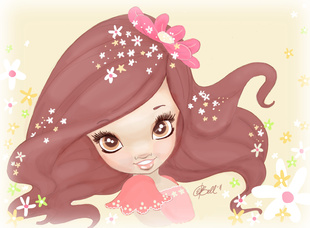
What mediums do you prefer working with?
Prismacolor color pencils hold a soft spot in my heart. These pencils glide onto most work surfaces with ease, are a dream to work with, and are soft with beautiful pigmentations. I love the raw texture that comes from the various applications of this medium. I also work with pen/ink, and would still consider myself an old school artist in the sense that I sketch all my work by hand first, before penning the finalized image in ink (my favorite pens to use are the Sakura, Pigma Micron pens, tip size 05) and scanning them into the computer to enhance digitally.
My most favorite medium right now is Adobe Photoshop. Love it. There’s no mess, no cleanup. No graphite transfers onto the sides of your hands. You don’t lose, drop or break materials (broken lead in pencils are a killer). Working with layers provides a new and higher dimension of control, and I can never overstate the beauty of the undo shortcut (often I wish life had an undo shortcut!). Files are stored quickly and easily, and colors and brushes are documented in a wink. In my opinion, Photoshop makes life deliciously convenient as a creative.
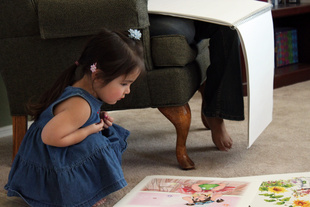
How has the digital age changed the process of illustration for you personally and for the industry as a whole? What are some of the pros and cons?
The digital presence in creativity is inevitable—at least, it was for me. I’m glad I made the transition, and I see it as a positive move. I can do so much more with my images in a much shorter time, and still get great results versus doing everything strictly by hand. This perk with respect to time is not just a matter of convenience for my oftentimes hare-brained schedule as a mother, artist, teacher, and wife, but a necessity.
As far as how the digital age has affected the creative industry, I feel there are both sides of the spectrum to consider. Creative growth has increased exponentially due to the increased time an artist has on hand, including the increased ability to reach and work with individuals and companies not just locally, but in different countries. Most companies these days also gravitate towards art that are digitally enhanced to some degree, and in the art licensing industry, being able to create quality art quickly with a high rate of turnover in a short timeframe is a must.
The beauty of search engines is really something of a miracle. Online directories provide a great tool for acquiring correct information to help with researching ideas for illustrations. Having an instant library and volumes of encyclopedic resources at your fingertips in a wink is ideal. As an artist, search engines allow me to find the information I need to help solidify details that a client needs for their images. Truly, Google is my friend—I honestly don’t know how I existed before it!
Largely, an impact that cannot be overlooked is the ability to more readily and easily work with companies across the ocean and the other side of the world—without even meeting them face to face—while in the comfort of your own home or office cubicle thousands of miles away. And with the remarkable convenience of email and Skype, communication is made prolific. Before the internet, this was practically unheard of. Nowadays, you can have a career and run a business from your own home (personally speaking), and, with the convenience and security of a trusted/secure internet payment method such as PayPal, get paid to do what you do, and be paid instantly. It’s fabulous!
On the downside, the digital age also brings with it the increased capacity to more easily lift copyrighted designs off the web; illegally downloading images from cyberspace is all too easily made accessible, and even when away from the internet, stealing with various scanning devices abounds in today’s world. Of all the many great things the digital age brings with it, digital image theft would be one of my largest irks at the moment.
Still, this shouldn’t deter the serious, professional artist from continuing to create good art. The scripture comes to mind, “It must needs be, that there is an opposition in all things. If not so…, righteousness could not be brought to pass.” One of my former institute teachers worded it well, too: “Without contraries is no progression.”
Despite the setbacks the digital age may bring with it, the advanced means of technology that influences the creative world is indeed a blessing. Selling good art is no simple task, and without the means of digital advancement, many of us would still be hunting around locally for work.
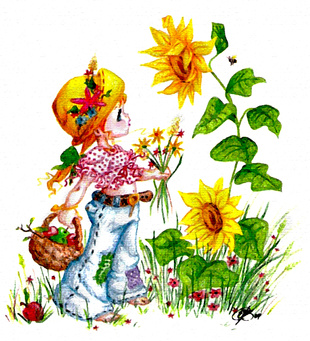
Can you describe for us your process of creating an image from idea to completion?
Working with Photoshop for me is now second nature and a necessity. And though I utilize Wacom’s Intuos4 tablet, I still hand draw the initial sketch and scan it into the computer for editing.
These are my basic steps:
Whether I create for myself or for a client, I always begin with a hand-drawn sketch on a sketchpad (or even multipurpose photocopy paper—I go through countless reams in less than a year, and when I say countless, I do mean a lot) before going near my computer. My sketches are very messy, and my line work raw and crazy. When studying animation, I was taught to never erase my lines as it shows where my thinking processes have come from. But even with the creative mess, it still looks aesthetically pleasing, surprisingly enough!
After the sketch is made, I then clean it up on a page of tracing paper. This works great because the paper is transparent, and I can quite easily select the lines on my original sketch I want to use and ignore the others. Back in the day of being a student, I used to have to use a light box to clean up my line work. When I discovered the ease of using tracing paper, it was a stroke of creative genius! (Like I say, when I finally acquire the Cintiq, this step and the next step will be made redundant.) And yes, I go through reams of tracing paper per year too. Once the image is re-traced in pencil and cleaned up, I scan it and save it to my MacBook Pro.
I then pull my image up in Photoshop and do a few edits to make it ready for client review.
Once the image is sent to the client, I wait for their thoughts. If changes are necessary, they usually let me know. Revisions are usually made directly in Photoshop.
After the revisions are approved and the image is ready for finalization, I print out the revised image and ink it up using a 0.5 point Sakura Pigma Micron pen.
Once the image is inked, I re-scan it into my computer. I then pull it back up in Photoshop. This is where the arduous work begins. Editing!
After I edit the image in Photoshop (this can take several hours, depending on the amount of detail and how accurately I managed to pen the sketch), if it is a simple black and white image, the final illustration is ready to be sent to the client.
If color is to be added, I work with layers and filters to reach the desired look I want. This can take hours, sometimes days. And even when I think I’ve finished, a day later I can look at the “final” color work and still want to make further changes.
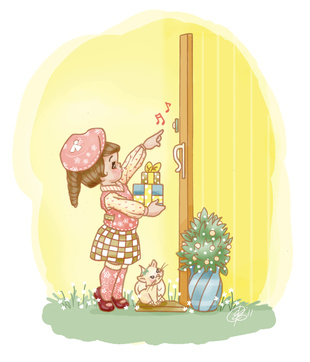
How do you go about collaborating with a client to capture what it is they want in an image?
When a client wants a particular image created using their own ideas, we first collaborate together, usually via emails because we are just too busy to talk as often as we’d need to. Once I get their thoughts down, I sketch up an illustration based on their guidelines. I like to give my clients multiple revisions to be sure that we get things the way they want it. After all, they will be distributing the image and investing a good amount into it. It’s important that the image I come up with not only reflect my own style (which is thankfully what they want in most cases) but also be something that they are happy with. Furthermore, they know the industry and their audience better than anyone else, including what their customer base wants and likes. And I get to create designs that I enjoy (we stick to what I am good at drawing, it works for all of us) and use my own style. I find this is a win-win situation for us both, and it’s a lot of fun working one on one with the people who invest so much time and interest in my work.
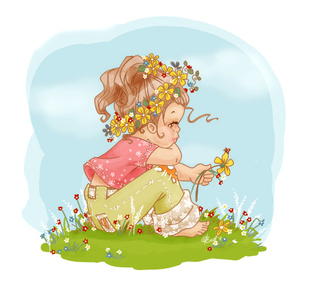
How has the gospel influenced your art?
Having an understanding of the restored gospel of Jesus Christ makes me happy. Striving to do what the Lord would have me do is a blessing and a challenge that I seek, both in action and within my heart. Having a testimony of truth allows myself to take heart in the daily challenges and life’s imperfections I personally face as a mom, a wife and a creative. Knowing who I am—that I am a daughter of God—motivates me to create illustrations that bring joy to myself and to others. Having a testimony of my Heavenly Father’s plan and of his love for me, and knowing who I am to him, along with my personal love for him, brings a desire and a deep responsibility to do good and to be watchful of the example I set, even through the type of art I create.
It has never been a mystery to me that my Heavenly Father has blessed me with a uniquely wonderful, creative gift. I remember my dear old dad telling me that I was a gold mine (of course, I also think he was partial). Because of my dad’s belief in me, I am more of the creative I am today. I recall how he helped me through school and my extracurricular art classes so I could get into the lofty animation course at Griffith University, the only animation course that offers a bachelor’s degree in the entire southern hemisphere.
People tell me my work is amazing, and though it’s nice to hear their compliments, it’s not me who is amazing—it is my Savior. He is the one who has blessed me with all that I have. Because of his blessings, I want to create images that invite that special feeling when the Holy Ghost is present, images that are good, lovely, and praiseworthy.
You may have noticed that many of my illustrations are based on the sweetness of childhood and the endearing innocence of this fleeting moment in life that disappears all too quickly in a hasty blink; this awe-inspiring moment in eternity exudes so many of our Savior’s attributes, and I seek to personify what I can of him in my art.
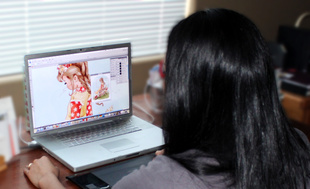
How do you see your work helping build the kingdom?
As a missionary, my mantra was “simplicity is power.” I found that my deepest experiences of joy and peace came from the very simple things. A smile. A considerate thought. A small note of appreciation. How I felt after a quick, sincere prayer. A hug. God works by small and simple means to bring about great results.
It is my hope that when someone views my art, as simple or as intricate as my pieces may come, they will feel the effects of such simplicity, a very special tugging inside their heart that makes them feel good all over, that helps them to realize that they’re doing okay, that our world is still a beautiful place to be in, and that we have been blessed by a very loving God who loves each of us without negotiation, without limits, despite our own limitations. Whether or not the viewer realizes where these feelings come from during that moment, I hope my work inspires them to live life happily, to strive for what is good, and to do better bit by bit. Inspiration through the simple things is remarkably empowering, and God is the author of it.
As a creative, I hope that my art sparks the simplest glimmerings of good in the heart of each viewer that in the end helps to build the kingdom, and makes their own personal, individual worlds, in this big complicated world, a small slice of heaven. ❧
